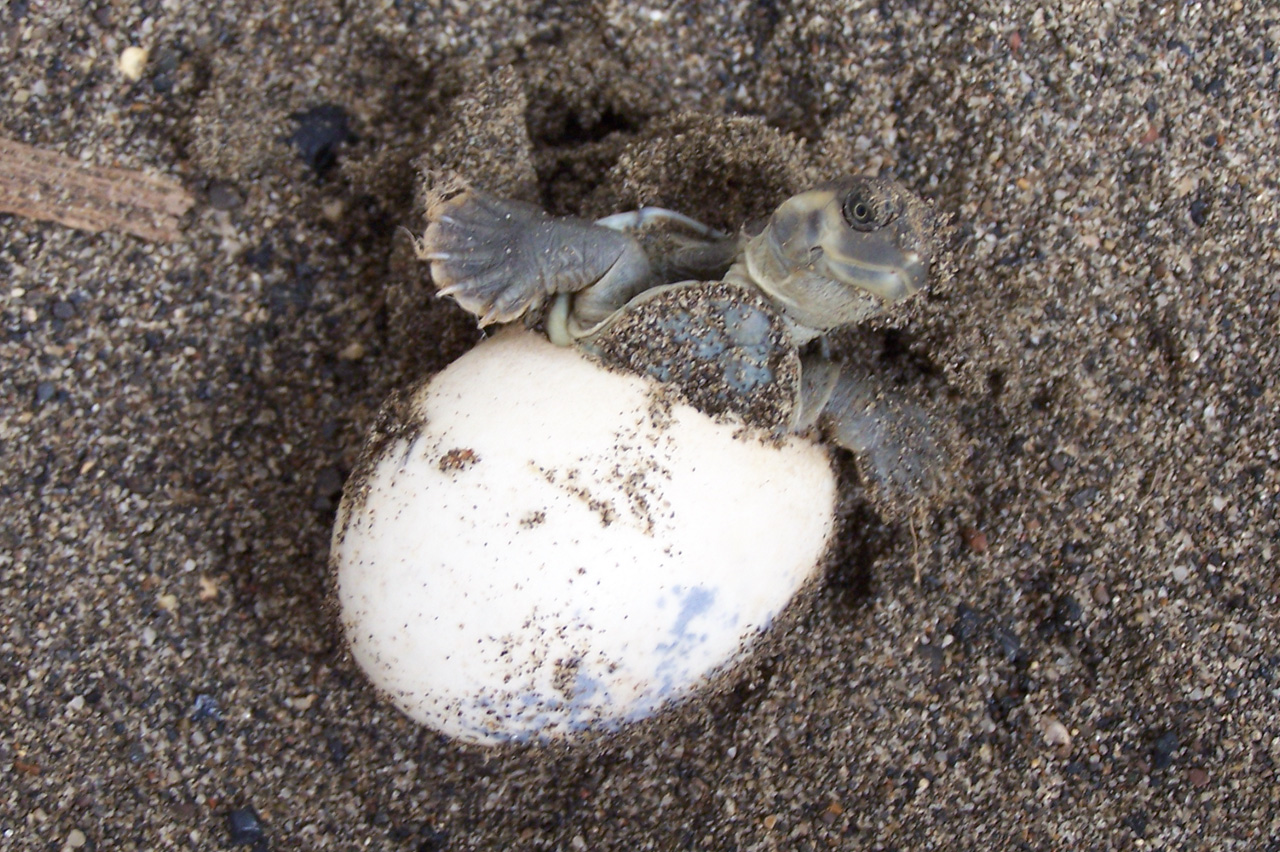Podocnemis lewyana
This freshwater turtle is endemic to Colombia, with its distribution primarily in the Caribbean and Magdalena basins, specifically in the Sinú and Magdalena rivers.
Females are larger and have a less rounded head compared to males. Additionally, females have a narrower shell at the back, while males have longer and wider tails.
Regarding color, males have a more defined white-yellow band on their heads, while in females, this band is more diffuse, and the head scales exhibit a reddish-brown tone.
 Foto: Natalia Gallego
Foto: Natalia Gallego
The Magdalena River turtle inhabits rivers, streams, swamps, and flooded areas connected to rivers. It is primarily herbivorous, helping to control the spread of aquatic vegetation and contributing to the nutrient cycle. Nesting occurs on exposed sandbanks during the dry seasons when water levels are low.
Its main threats include hunting of adult individuals and egg poaching, as well as damage to nesting sites caused by livestock intrusion, sand extraction, and the manipulation of stream or river levels to supply reservoirs.
The species is classified as Critically Endangered (CR) by the IUCN. In Colombia, it can be found in the departments of Antioquia, Atlántico, Bolívar, Boyacá, Caldas, Cesar, Córdoba, Cundinamarca, La Guajira, Magdalena, Santander, Sucre, and Tolima.
To support its conservation, WCS collaborates with the community of Cotocá Arriba and the Econbiba organization in Córdoba, where a protection and conservation program for the species has been established. This program also promotes an ecotourism strategy that actively involves the local community.
Additionally, WCS conducts ex-situ conservation efforts with the nests laid during the breeding season and carries out annual monitoring of the adult turtle population.
For the Magdalena River, a collaborative effort is carried out with local fishing associations, establishing conservation agreements, promoting environmental education activities, and working to reduce the accidental deaths of individuals during fishing operations.
In Cotocá Arriba, an average of 130 nests are conserved ex-situ each year, and over 1,000 hatchlings are released back into the river annually.
Translated with AI support